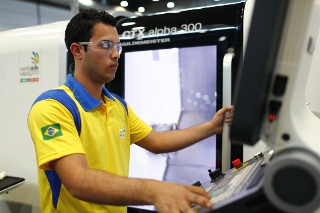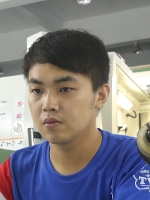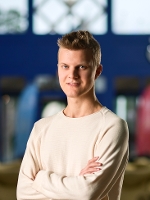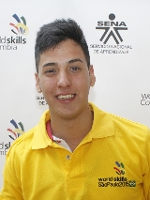CNC Turning
Skill Explained
CNC Turning is a branch of engineering. Engineers have to find mechanical solutions that can make complex designs possible. Within an assembly that you may see and use every day, every single part interacts with every other. This is true of cars, Smartphones, aircraft, and so on; the possibilities are endless. For example, there are about 10,000 parts in just one car. Engineers create assemblies of many parts, and using many different materials, through CAD (Computer Assisted Drawing) software.
Each part of an assembly is made of different materials, and needs different geometries, dimensions and surface qualities. The engineer brings all these requirements into technical drawings which are called “blueprints”. But who will build these parts? To answer that question we have to decide the best way to produce each part. There are many ways of doing this, like welding, milling, casting, and 3D Printing. One very important method is CNC Turning.
A CNC Lathe is a machine on which material turns around an axis at high speed, and where cutting tools driven by computer software are moved to cut away excessive material to get the expected part. The CNC Turning Machinist receives the blueprint. Then he/she uses the Lathe in many ways to find solutions in order to build the part. These machines are very expensive, because they can do remarkable things. To have an idea of this, think what it means to achieve accuracy below 10 microns, which is six times thinner than a human hair.
The CNC Turning Machinist has to use a computer to tell the Lathe how to move the tools and cut the part. He/she also has to set up the Lathe with all the cutting tools. These tools can cut almost every material (stainless steel, plastic, soft steel, aluminium, bronze, and so on) but we have to choose well. We also choose the clamping method. This is where the material will be held firm.
When the machine starts cutting material, the Machinist makes sure that the dimensions exactly fit the blueprint specifications. For this, very accurate inspection tools are used. A smart Machinist will get the part to fit the blueprint specifications at the first attempt.
The finished and quality controlled part is sent to the assembly line with every other part, and in the end, if everyone has done their job well, the finished assembly will meet expectations and please its customers.
What the Competitors do at the Competition
The Competitor has to carry out independently the following tasks:
- Prepare, based on the paper drawing, the desired CNC programs
- Calculate the points of intersection on profiles if not shown on the drawings by means of any kind of calculator or the provided CAM system or the machine control.
- Select the proper tools and independently mount, set-up and measure them.
- Machine and measure the test project. Use any type of analysis and correction to complete the desired task.
- Comply with the safety instructions by the machine manufacturer and with the national safety regulations, as well as WorldSkills regulations.
Competitors
Abdulla AL Hamad
United Arab Emirates
ZHI-MING CHEN
Chinese Taipei
Duwayne Davids
South Africa
Vidar Degerheim
Sweden
Alex Elton
United Kingdom
Trevor Fandrick
Canada
Lkhagva Khadaa
Mongolia
Jishnu Kottayi
India
Eduardo kruczkievicz
Brazil
Jon LAPEIRA
Spain
Beom Hee Lee
Korea
Anton Loskutov
Russia
Ming Yang Ng
Singapore
ALIAKSANDR POMINAU
Belarus
Robin Rohrer
Switzerland
Hernan Dario Ruiz Tobar
Colombia
Ryuta Sakai
Japan
Kittinan Sornsongkhram
Thailand
Jonas Tåsås
Norway
Nikolaj Vadstrup Pedersen
Denmark
Alex VERNY
France
Alexander Wagner
Austria
Shuai Wang
China
Tim Zelmer
Germany
Experts

Julian Eduardo Belalcazar
Colombia

Kenneth Berget
Norway

William Brunie
France

Louis Carelse
South Africa
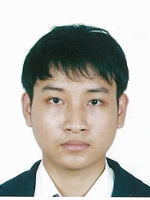
TEERANUN CHOPPANID
Thailand

Christopher Cooper
United Kingdom

Gernoth Dolinar
Austria

Akira Fujimoto
Japan
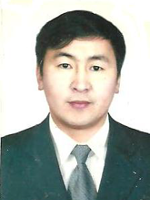
Oyunbat Gansukh
Mongolia

Jörg Harings
Germany

Juan Angel Ibarra Salazar
Mexico

Oskar Jonsson
Sweden

Jin Woo Kim
Korea

Igor LARRAÑAGA
Spain

Susan LeFort
Canada

Yeong Teck Nah
Singapore
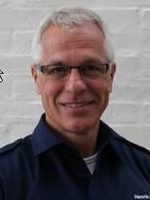
Henrik Nielsen
Denmark

Kareem Ragab
United Arab Emirates

ARTSIOM RYBAK
Belarus

Sabit Sartbayev
Kazakhstan

Jia Hsing Shen
Chinese Taipei

Fangzhi Song
China

Jeferson Artur Tangerino
Brazil

Ilya Tonkikh
Russia
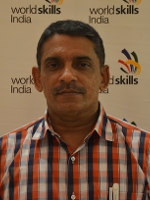
Dayanand Vishwaksenan Nair
India

Simon von Moos
Switzerland
Videos
A New Look at Skills
Autodesk Publisher 3D models*
Download for desktop
Download for mobile
Autodesk Inventor Data Sets**
* Open the 3D models on desktop with Autodesk Inventor Publisher. On mobile download the Autodesk Inventor Publisher Mobile Viewer app (iOS or Android).
** Students and Teachers can download Autodesk Inventor software via the Autodesk Student Community, Educational Institutions via Autodesk Academic Resource Centre (ARC).

